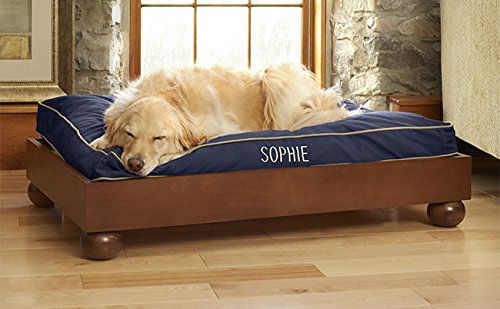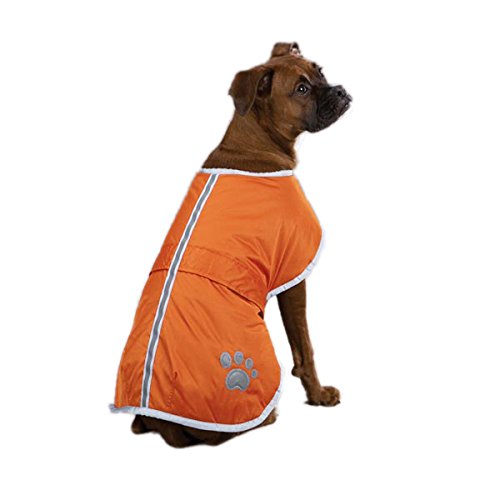Some people claim that
Chesapeake Bay Retriever training is a difficult job because of the stubborn nature of the dog. These dogs are intelligent, eager to please, and have a good memory, but they need to understand who is the boss (you). Approach your new puppy with the idea that you are the boss and expect that he or she will naturally learn what you have to teach, and you should be alright. Training a dog with the size, energy, and strength of a "Chessie" is perhaps more important than training a smaller dog, because you certainly don't want your massive pet causing damage to life, limb, and property. Your dog will need to learn some manners.
The first thing your puppy needs to learn during
dog training is to eliminate outdoors. When you bring your new friend home, even before going inside, take him or her to the spot you want to designate and let give the pup sufficient time to urinate or have a bowel movement. Praise your puppy for being so good. Puppies like to please and get praise. Inside the house, your puppy will need a crate with a blanket or towel. The crate should be big enough for him or her to be able to turn around comfortably. The puppy will not soil the crate because he or she does not want to live with a mess. Until the pup is about 8 weeks old, he or she should be taken out of the crate and taken straight outside every hour. Again, use praise to reward him or her when he or she eliminates. At three to six months he or she should be able to wait 3 hours, and may be let out of the crate when he or she seems to understand the difference between inside and outside.
You will also want to teach your Chessie the command "off," so that when Grandmother comes over she does not get a fractured hip. First, teach the pup to recognize the word and associate it with good things. Say, "Off," and give the dog a treat. Repeat the process once or twice. The pup should begin to look at you when he or she hears the word. Next, give the puppy some time to start playing with a toy or some other interesting object in the room, and say "off." When the puppy looks up, quickly reward him or her with a treat. Repeat this process until the dog understands that letting go of an object when he or she hears the command is something good to do. Some people prefer the command "leave it," which is also acceptable, but one command should be chosen for consistency.
hesapeake Bay Retrievers have a natural tendency to chase things, which can be a good thing if take your dog hunting or like to play with ball. It can be dangerous if your friend gets distracted and wants to run out into traffic. You will want your puppy to walk on a leash without pulling you. Get a collar that fits comfortably. You should be able to insert two fingers easily between the collar and the puppy's neck. Attach a leash and take your puppy out for a stroll. As long as he or she walks beside you, keep walking along normally. If the puppy starts to pull in another direction, stop and pull the other way. Keep up the walk and continue to turn and walk the other way whenever the puppy begins to pull. Gradually your dog will learn to walk by your side because trying to pull off in another direction will get opposite results from what he or she is trying to do.
"Sit" and "down" are helpful to show the dog who is in control. Say, "sit," and push your puppy's bottom to the sitting position. Once he or she is sitting, give praise and a treat. After the puppy has mastered "sit," gently pull his or her front legs down while say, "down." Repeat the praise and treat every time until your puppy follows the command. Your dog should hear your commands and be expected to obey them throughout his or her life so that the training is not extinguished. One way to do this is to set aside some time every day for training sessions.
Many more lessons can be taught to your Chesapeake Bay Retriever for shows, hunting, good manners around the home, and simply for fun. These are the basics for now.

 Canine Nutrition and Wellness Part 3: To Give or Not to Give Your Dog Supplements?
Nowadays, if you browse the
Canine Nutrition and Wellness Part 3: To Give or Not to Give Your Dog Supplements?
Nowadays, if you browse the
 Tips for Choosing a Boarding Kennel
Credit: Morguefile.com
Tips for Choosing a Boarding Kennel
Credit: Morguefile.com
 Top Seven Dog Treats - A list of the best, most healthy dog treats available
Top Seven Dog Treats
It抯 easy to go to your local pet super
Top Seven Dog Treats - A list of the best, most healthy dog treats available
Top Seven Dog Treats
It抯 easy to go to your local pet super
 Dog Coats for Winter
Our dogs are part of our fam
Dog Coats for Winter
Our dogs are part of our fam
 Dog clothing is essential
Dog clothing is essential
Dog clothing is essential
Dog clothing is essential